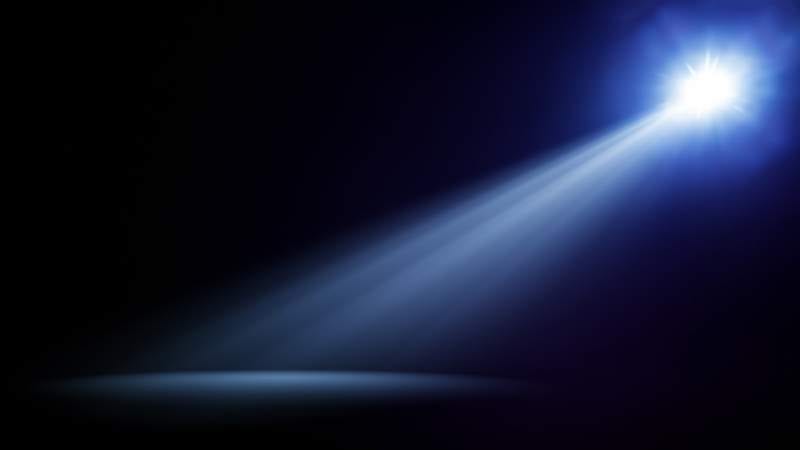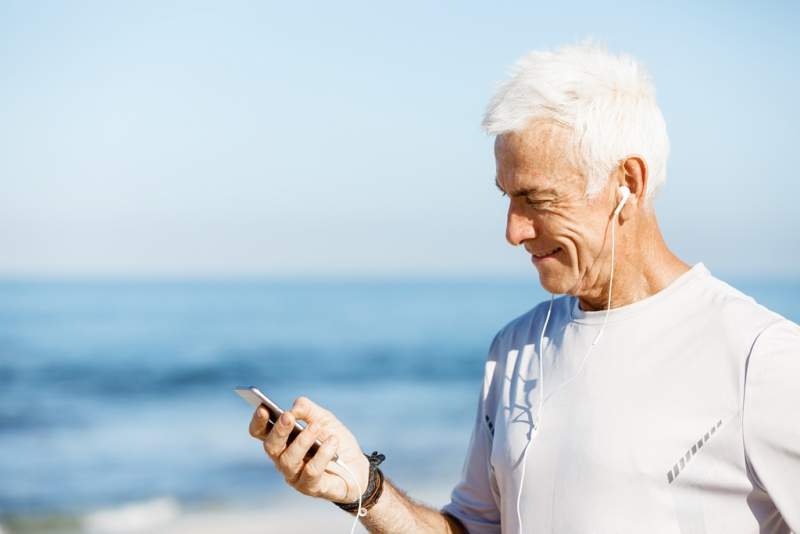Technologies have slowly taken an essential part in our day to day lives. From the way we communicate, we transport, we do our task, it is undeniable that technology is playing a big role. It is giving our life more convenience.
However, along with these pros, comes the cons. In the US, over 90% of the modern kids know how to use smartphones. Almost 88% of the teens are using more than 4 smartphones in which they spend 4 hours with them. Why bother with these figures? These raging numbers of people getting hooked onto these technologies are suffering from sleep disorders.
The Negative Side of Gadgets
 Phones, laptops, computers and the like had to make our life a lot easier. Gathering of information and communication were made more convenient and easier with these gadgets. However, our circadian rhythm is the one that is greatly affected by these technologies. How so? These things are emitting blue light.
Phones, laptops, computers and the like had to make our life a lot easier. Gathering of information and communication were made more convenient and easier with these gadgets. However, our circadian rhythm is the one that is greatly affected by these technologies. How so? These things are emitting blue light.
The Truth About Blue Light
 What is blue light? Blue light is not new. It is with us, it’s just that we don’t really have a deep understanding of what really it is. Just by simply turning your switch on, check the messages on your phone or stepping out of your home to enjoy the rays of the sun, you are getting yourself exposed to blue light.
What is blue light? Blue light is not new. It is with us, it’s just that we don’t really have a deep understanding of what really it is. Just by simply turning your switch on, check the messages on your phone or stepping out of your home to enjoy the rays of the sun, you are getting yourself exposed to blue light.
The truth is that blue light is not only emitted by your digital screens. It is everywhere since it is a part of the natural visible spectrum of light. Blue light is natural. In fact, the sun’s light delivers the most amount of blue light to your immediate surroundings! Even if the weather condition is adverse, it is unlikely that the sun will not expose you to blue light.
Then there are artificial sources of blue light. One of the leading sources is the compact fluorescent lights (CFLs) and light emitting diode (LED) light sources. So even if you are working in an artificially lit environment, you are not limiting your exposure to blue light.
Working in blue light rich environments can lead to long-term eye damage. Modern research linked long-term exposure to blue light to several cases of age-related macular damage (AMD).
Additionally, almost all digital devices emit blue light. These include devices with LED or LCD screen like PC monitors, laptop screens, mobile phones, tablets, and TV. No matter how to advance your gadgets are it is a strong source of blue light. LED emits about 35%, CFLs emit about 25%, but the majority comes from the gadgets with screens use on a daily basis.
How will you ensure that you’re not risking your health in the exposure of the blue light? How does blue light affect your health?
Circadian Rhythm and Blue Light
 If you feel energized and drowsy around the same time, it is the circadian rhythm that’s doing its work. It is a 24-hour internal clock responsible for the cycles between sleepiness and alertness at regular intervals. It is also known as the sleep/wake cycle.
If you feel energized and drowsy around the same time, it is the circadian rhythm that’s doing its work. It is a 24-hour internal clock responsible for the cycles between sleepiness and alertness at regular intervals. It is also known as the sleep/wake cycle.
Melatonin plays a significant role in the circadian rhythms. It is responsible for the production and regulation of melatonin, the hormone that controls our sleep-wake cycle. Melatonin suppression happens when high levels of melanopsin absorb light with a wavelength average of 460nm. Mobile phones emit a high flux of blue light which interferes with the circadian rhythm of the users. Needless to say, blue light and sleep are interconnected with each other.
The Solution
 How can you counter the harmful effects of the blue light? Listed below is the 7 effective ways. Check on the list.
How can you counter the harmful effects of the blue light? Listed below is the 7 effective ways. Check on the list.
Increase Your Carotenoid Supplements
 There are well over 600 known carotenoids. The most common are beta-carotene, lutein, zeaxanthin, alpha-carotene, lycopene, and astaxanthin. They are easily distinguished by their orange, yellow and red pigments. They are mostly found in yellow and orange vegetables like tomatoes, carrots, apricots, watermelon, and apricots.
There are well over 600 known carotenoids. The most common are beta-carotene, lutein, zeaxanthin, alpha-carotene, lycopene, and astaxanthin. They are easily distinguished by their orange, yellow and red pigments. They are mostly found in yellow and orange vegetables like tomatoes, carrots, apricots, watermelon, and apricots.
As an antioxidant, carotenoids are thought to provide health benefits in decreasing the risk of diseases particularly certain cancers and eye diseases. Beta-carotene has the ability to be converted into vitamin A. Zeaxanthin and Lutein absorbs the damaging blue light that enters the eye, thus, protecting your vision.
Blue-light Blocking Lenses
 There are several blue-light blocking glasses brands available at the pharmacy or online stores that are scientifically developed and ophthalmologically approved. They can cost you over $80 but the benefit it’ll give you is worth it. At the same time, you may try scouring the internet for light blocking screens for your monitor, TV, laptop to minimize your exposure to blue light.
There are several blue-light blocking glasses brands available at the pharmacy or online stores that are scientifically developed and ophthalmologically approved. They can cost you over $80 but the benefit it’ll give you is worth it. At the same time, you may try scouring the internet for light blocking screens for your monitor, TV, laptop to minimize your exposure to blue light.
Specialty Light Bulbs
 If you stay indoors most of the evening, you might consider replacing your LED and CFL light bulbs as they emit high levels of blue light. Opt for night-time, blue minimizing bulbs as well as new daytime bulbs. The perfect balance of blue-light exposure can help get back in sync with your circadian rhythm.
If you stay indoors most of the evening, you might consider replacing your LED and CFL light bulbs as they emit high levels of blue light. Opt for night-time, blue minimizing bulbs as well as new daytime bulbs. The perfect balance of blue-light exposure can help get back in sync with your circadian rhythm.
Blue-light Filter Applications and Software
 Some smart devices now come with an add-on reading filters that cut down blue light emission. You don’t need to attach the physical filter but you can switch on the tool or the application to reduce the light emission. There are also several open source applications for Android users that can auto adjust the light emission from the devices.
Some smart devices now come with an add-on reading filters that cut down blue light emission. You don’t need to attach the physical filter but you can switch on the tool or the application to reduce the light emission. There are also several open source applications for Android users that can auto adjust the light emission from the devices.
The 20-20-20 rule
 You may also try this 20-20-20 lifehack. You need to look away from your phone screen or monitor every 20 minutes. Look at an object at least 20 feet away from you for 20 seconds. Blink our eyes most often to keep your eyes moist. You can also use artificial tears to minimize the digital strain on your eyes.
You may also try this 20-20-20 lifehack. You need to look away from your phone screen or monitor every 20 minutes. Look at an object at least 20 feet away from you for 20 seconds. Blink our eyes most often to keep your eyes moist. You can also use artificial tears to minimize the digital strain on your eyes.
Maximize your exposure to natural light during the day
 Maximize your exposure to natural light in the mornings. Doing so will make your circadian clocks stay in tune with the external clocks. Take a few extra measures if your office is not nourishing towards your internal clock. If possible, shift your work-desk near the window or invest in a bright light that emits at least 1000 lux of light.
Maximize your exposure to natural light in the mornings. Doing so will make your circadian clocks stay in tune with the external clocks. Take a few extra measures if your office is not nourishing towards your internal clock. If possible, shift your work-desk near the window or invest in a bright light that emits at least 1000 lux of light.
Go outdoors
 Engaging in outdoor activities is one way of boosting your health. You can camp, go hiking or trekking with family and friends on weekends. These activities will help restore the natural life force you need to plow through a month’s blue light infused slogging. Camping and trekking promote a more natural setup that is devoid of blue-light-emitting monitors and screens. Studies show that campers felt more active and fresher on the following weekdays as compared to individuals who stayed back.
Engaging in outdoor activities is one way of boosting your health. You can camp, go hiking or trekking with family and friends on weekends. These activities will help restore the natural life force you need to plow through a month’s blue light infused slogging. Camping and trekking promote a more natural setup that is devoid of blue-light-emitting monitors and screens. Studies show that campers felt more active and fresher on the following weekdays as compared to individuals who stayed back.
Apart from these, camping and hiking also cleanses your lungs, build strong social connections, strengthen your cardiovascular health and reduces stress. Plus, it cuts down the time you spend on your gadgets.
Takeaway
Technologies come with pros and cons. Whichever weigh more depends on the users. It might be hard at first to change your lifestyle to ensure you’re getting a better and healthier life. But remember that it is better to prevent any problems in the future than to give your best shot solution.
